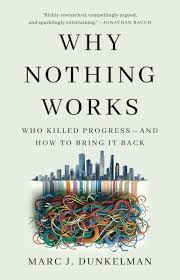In a controversial move, U.S. Secretary of State Marco Rubio announced on Thursday that the State Department had revoked the visas of more than 300 students, a number that is expected to rise. This action is part of the White House’s growing crackdown on foreign-born students, many of whom have been involved in political activism, particularly related to pro-Palestinian protests that have been sweeping college campuses.
Rubio made it clear that the government’s focus is on what he referred to as “these lunatics” – individuals who, according to him, are using their student visas not for education but for activism. His statements, made during a visit to Guyana, came amid reports of increasing detentions and deportations of students from countries like Iran, Turkey, and Palestine.
"It might be more than 300 at this point. We do it every day. Every time I find one of these lunatics, I take away their visas," Rubio said, underscoring the administration’s intent to target those engaging in political activism. Some of these arrests have taken place in dramatic fashion, with students detained by masked immigration agents and sent to detention centers, often far from their homes, with limited explanation.
Among the high-profile cases is that of Rumeysa Ozturk, a Turkish national studying in the U.S. on a student visa. Ozturk was arrested earlier this week in Somerville, Massachusetts, and is currently being held in a Louisiana detention facility. Her arrest follows her involvement in a Tufts University student newspaper article that called on the institution to divest from companies with ties to Israel and to acknowledge what she referred to as the Palestinian genocide. Importantly, Ozturk’s essay did not mention Hamas, yet her arrest has raised concerns over the broader political targeting of students engaged in activism.
Many of the students caught up in this crackdown are believed to have been involved in the pro-Palestinian protests that gained momentum on campuses last year. While the administration has not provided specific reasons for targeting these students, far-right pro-Israel groups have compiled lists of individuals they accuse of promoting anti-U.S. or anti-Israel sentiments. These lists have reportedly been shared with U.S. immigration authorities, further intensifying the political climate surrounding these detentions.
The move is part of a larger agenda by the Trump administration to clamp down on the activities of legal permanent residents and student visa holders. Immigration experts warn that such actions undermine the fundamental American right to free speech and assembly, particularly in academic settings.
Ben Wizner, director of the ACLU's Speech, Privacy, and Technology Project, described the current situation as "uniquely disturbing," stating that it sends a message to the brightest minds around the world who traditionally chose to study in the U.S. for its openness and intellectual freedom. The message, he argues, is now one of rejection.
The administration's actions are said to be guided by an immigration provision dating back to the Cold War, which allows the revocation of visas if a student's activities are seen as posing "potentially serious adverse foreign policy consequences." Some of the students targeted, including Ozturk, have had their visas revoked under this justification, despite no clear evidence of criminal activity.
Other notable individuals caught in the crosshairs include Alireza Doroudi, a doctoral student from Iran at the University of Alabama, and Badar Khan Suri, an Indian graduate student at Georgetown University. Both have been detained without clear charges, sparking concerns over whether their arrests are retaliatory measures for their political views. Suri, for instance, was allegedly detained for spreading Hamas propaganda, although he has denied such claims.
This wave of detentions and visa revocations also extends to other students like Yunseo Chung, a 21-year-old Columbia University student who participated in protests. Despite being a legal permanent resident, Chung now faces deportation. Similarly, Leqaa Kordia, a Palestinian student at Columbia, was detained by ICE after allegedly overstaying her student visa.
The increasing number of student arrests and deportations is drawing the attention of human rights advocates, who argue that these actions are a direct attack on free speech. Samah Sisay, one of the attorneys representing detained students, expressed concern that the government's actions are not only targeting specific political views but are also intended to intimidate future student activists.
This crackdown is also raising questions about the role of U.S. universities in protecting their students. In one high-profile case, Columbia University agreed to implement significant changes after President Trump threatened to withdraw $400 million in federal research funding over accusations that the university was not doing enough to address harassment of Jewish students.
As these events unfold, the future of student activism in the U.S. appears increasingly uncertain. If these trends continue, more students may face the loss of their visas, deportation, or even criminal charges related to their political beliefs and actions on campus. The implications for free speech, academic freedom, and international student exchange are profound, and advocates are calling for a reassessment of policies that allow such widespread and seemingly arbitrary actions against students.
In the face of this growing repression, one thing is clear: the United States is now sending a strong message to the world about what it will and will not tolerate in its universities. Whether that message will stifle the tradition of academic activism remains to be seen.

